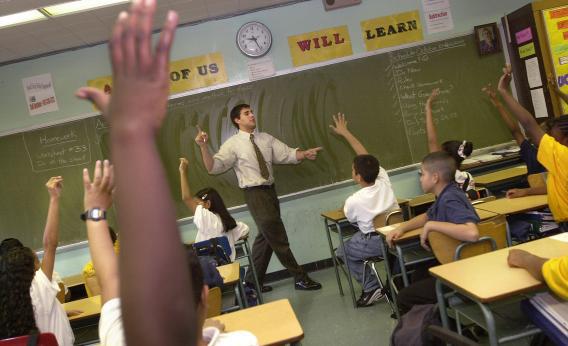What if your kids went to school Dolly Parton style, 9 to 5? Besides gaining the opportunity to rewrite that particular earworm of a song for the school’s talent show, the theory goes, they’d learn more. Have more time for enriching after-school activities at school, instead of requiring a parent to drive them around in the rugrat race. And that parent (so much more often a mother that it’s tempting to just say mother, but I won’t) would be more able to easily stay in the work force, or hold down a job while her kids were young, without being required to either appear at pick-up at three o’clock daily or find quality (not to mention educational) after-school care.
This pie-in-the-sky idea is being bandied about in the New York Times’ Room for Debate: Should the School Day Be Longer?, with the group opinion seeming (probably because each participant has extremely limited space to make an argument) to round up to “maybe, but.” As in maybe, but only if it’s used wisely (Annie Murphy Paul, arguing for a return of naptime, recess and the arts; teacher Vern Williams, arguing for the opposite with “serious academic ventures” rather than “glorified recess”). Maybe, but only for kids who won’t otherwise get good after-school experiences (Kipp Foundation CEO Richard Barth, who says longer days give Kipp students chances at exercise, arts, sports and clubs that affluent kids already have; and S. Paul Reville, Massachusetts Secretary of Education, who wants expensive additional learning time to go to kids who need it: “low-income students and those with special learning challenges”).
The only flat-out “no” comes from Vicki Abeles, producer of the documentary “Race to Nowhere.” Even she favors investing “resources so that children in every community have access to opportunities for after-school programs offering arts, sports and other activities that support the growth of the whole child, as well as working parents.” Different in name, but not in practice.
How to fund new programs, or decide who qualifies? There’s no room in this debate to explain either. What there is is a surprising concensus that something more should be done for kids and parents who need it between the hours of three and five, and a wide variety of thoughts on what that might be, all valid. More naps, recess and arts sound great for younger students. “Serious academic ventures” for middle schooler might include robotics clubs and science fairs or putting on a play or literary magazine. Additional learning time for ESL students? A choice that, in some schools, would benefit teachers, ESL learners and their peers—but not every community needs it.
The trouble with a debate over the length of the school day is that it isn’t, and never will be, a single national question or even a single question. What’s needed isn’t room to debate, it’s room (and dollars and hours and teachers) to put different options and programs in place and figure out what works where—a premise that I think all the debaters could agree on. Where those resources will come from? Now, there’s a debate.
Should Kids Spend More Time at School?

Teacher David Nieder of “Knowledge is Power Program” (KIPP) Academy takes questions from his class in the Bronx, New York.
Advertisement